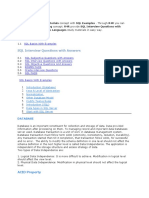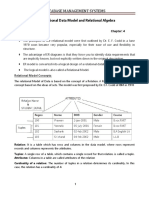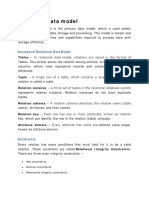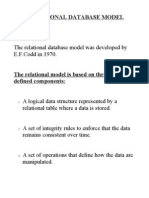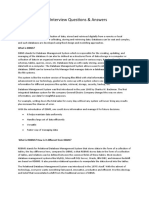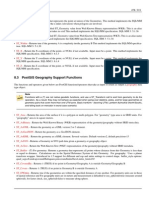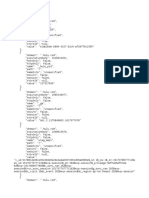0% found this document useful (0 votes)
13 views17 pagesChapter II Relational Model
Chapter II discusses the relational model introduced by Edgar Codd, outlining its fundamental concepts such as attributes, tuples, relations, and normalization. It emphasizes the importance of database normalization for reducing redundancy and improving data integrity, while also explaining functional dependencies, keys, and integrity constraints. The chapter concludes with an overview of SQL and its categories, including DDL, DML, DCL, and TCL, which are essential for managing relational databases.
Uploaded by
anis.bobi000Copyright
© © All Rights Reserved
We take content rights seriously. If you suspect this is your content, claim it here.
Available Formats
Download as PDF, TXT or read online on Scribd
0% found this document useful (0 votes)
13 views17 pagesChapter II Relational Model
Chapter II discusses the relational model introduced by Edgar Codd, outlining its fundamental concepts such as attributes, tuples, relations, and normalization. It emphasizes the importance of database normalization for reducing redundancy and improving data integrity, while also explaining functional dependencies, keys, and integrity constraints. The chapter concludes with an overview of SQL and its categories, including DDL, DML, DCL, and TCL, which are essential for managing relational databases.
Uploaded by
anis.bobi000Copyright
© © All Rights Reserved
We take content rights seriously. If you suspect this is your content, claim it here.
Available Formats
Download as PDF, TXT or read online on Scribd
/ 17






